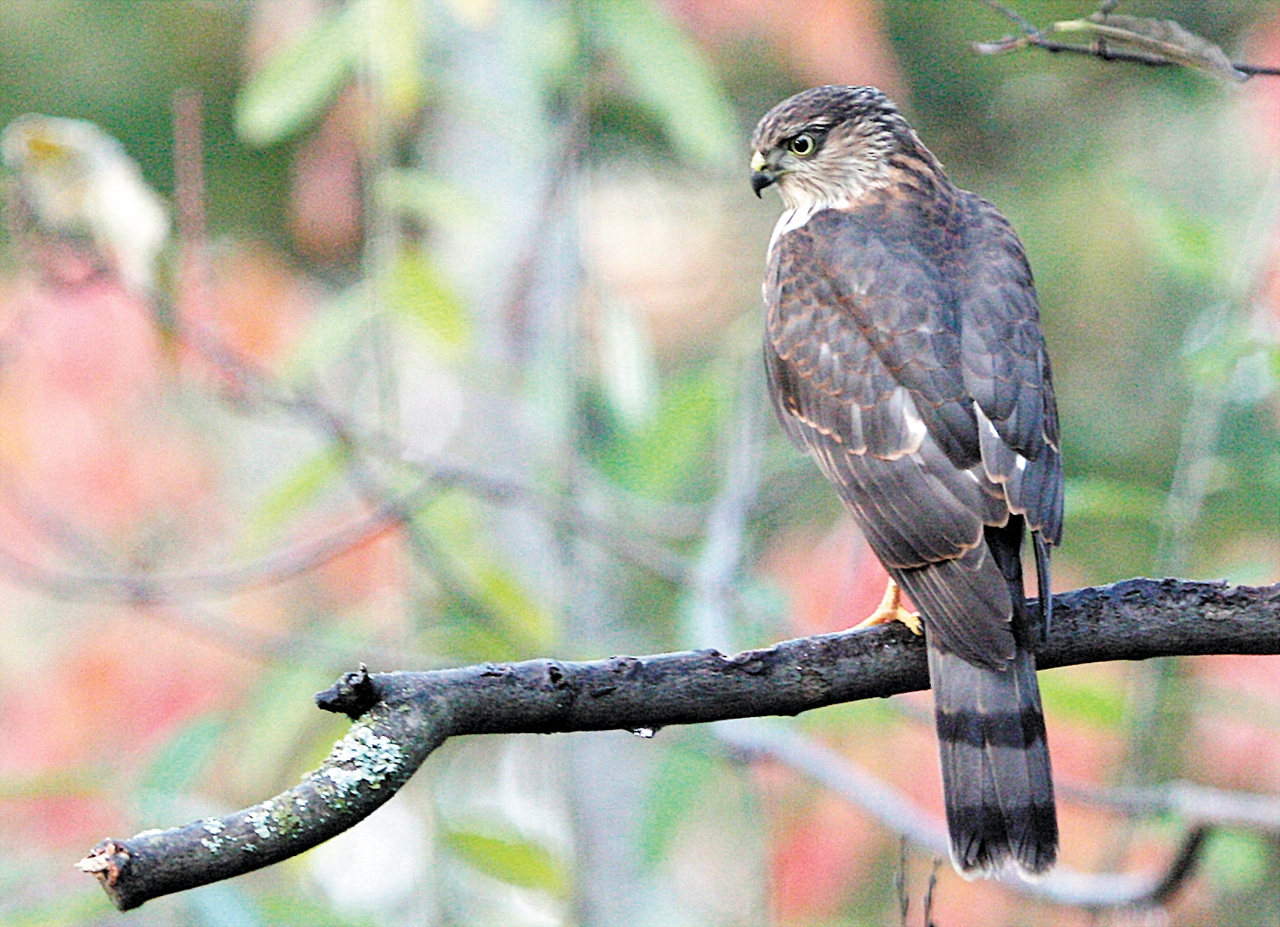Support the Timberjay by making a donation.
Hawk eyes
Sharp-shinned hawks are among the deadliest hunters in the forest
Waves of migrating birds have been moving through the area for weeks, and it hasn’t gone unnoticed by one of the most effective predators of small birds— sharp-shinned hawks.
Here in North …
This item is available in full to subscribers.
Attention subscribers
To continue reading, you will need to either log in to your subscriber account, below, or purchase a new subscription.
Please log in to continue |
Hawk eyes
Sharp-shinned hawks are among the deadliest hunters in the forest
Waves of migrating birds have been moving through the area for weeks, and it hasn’t gone unnoticed by one of the most effective predators of small birds— sharp-shinned hawks.
Here in North America, sharp-shinneds are the smallest of the genus Accipiter, a group of hawks that in our area include the goshawk and Cooper’s hawk, in addition to the sharpy. These are stealthy hawks, that live primarily in forests and prey extensively, though not quite exclusively, on birds.
During migration, they regularly follow flocks of sparrows, warblers, and other small birds, which serve as a sort of portable smorgasbord for these deadly hunters. Small birds are incredibly wary of sharp-shinneds and there’s nothing like the sudden appearance of one of them to send the birds scattering from your feeder. It’s amazing how a woods full of chickadees, nuthatches, sparrows and finches can, within seconds, seem lifeless and silent the moment a sharp-shinned arrives.
I’ve watched them many times, as they perch in a tree near the feeder, and patiently scope out the surrounding trees and brush for the slightest movement that might give away the hiding place of potential prey. They can be relentless. Once, I watched a sharp-shinned arrive, sending a flock of sparrows scattering. One of the sparrows ducked under a log, but apparently not quickly enough to avoid the hawk’s notice. The hawk first moved from perch to perch, trying to spot the sparrow. After that failed, it flew to the ground and slowly walked around the log, peering underneath, until the panicked sparrow eventually flushed. The hawk was on it in an instant.
Sharp-shinneds are incredibly quick. While they don’t boast the 200 mile per hour stoop dive of the peregrine, in the short distances in which they operate they can be quicker than the blink of an eye. I experienced that firsthand several years ago, while hand-feeding chickadees in the yard. A chickadee was sitting on a wire that suspends our bird feeders, and as he dropped the two feet to my handful of sunflower seeds, a sharp-shinned, which had obviously been watching from behind me, caught the chickadee in mid-air just inches from my hand. For a second I didn’t know what had happened. I heard a loud pop, but the sharp-shinned moved so fast that I literally didn’t see it, until a second or two later when I turned and saw it fluttering into the woods, chickadee in tow.
I was stunned, but had to admire the bird’s daring and prowess. The poor chickadee probably never knew what hit it.
Of course, not every sharp-shinned is so skilled, or so intimidating to other birds. This past weekend, a juvenile sharp-shinned showed up near the feeder, which sent the smaller birds scattering, but wasn’t enough to keep the blue jays away. Every minute or so, the young hawk would buzz the jays, which would send them scattering for an instant, only to return moments later to the feeder. This went on for more than an hour, and started to seem like a game. Sometimes, the blue jays turned the tables and chased the hawk, which wasn’t much larger than a jay. I doubt the blue jays would have reacted this way to an adult sharp-shinned, but they obviously recognized that this was a juvenile bird and not as deadly as a mature bird would be.
While sharp-shinneds normally feed on small birds, they have been reported to kill birds as large as a ruffed grouse, so a blue jay certainly isn’t out of the question.






